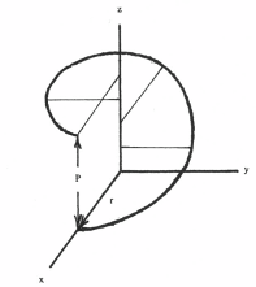Biology Reference
In-Depth Information
199
and
Figure 8-.3.
A right-handed helix of radius r and pitch P.
Consider an X-ray beam from a source hitting a specimen. The electrons in
the specimen are set into vibration around their equilibrium positions and
emit diffracted beams of the same wave length. The diffracted beams will
interfere with each other, according to the Bragg's law of diffraction, and
are recorded on a film. For two electrons, located at A and B, in the
specimen (Fig. 8-4), let
s
o
denote the unit vector in the incident direction,
and
s
the unit vector in the diffracted direction. The diffracted wave for
electron at B will lag behind that for electron at A by a distance equal to AC
- DB. If the position vector from A to B is denoted by
x
, then




